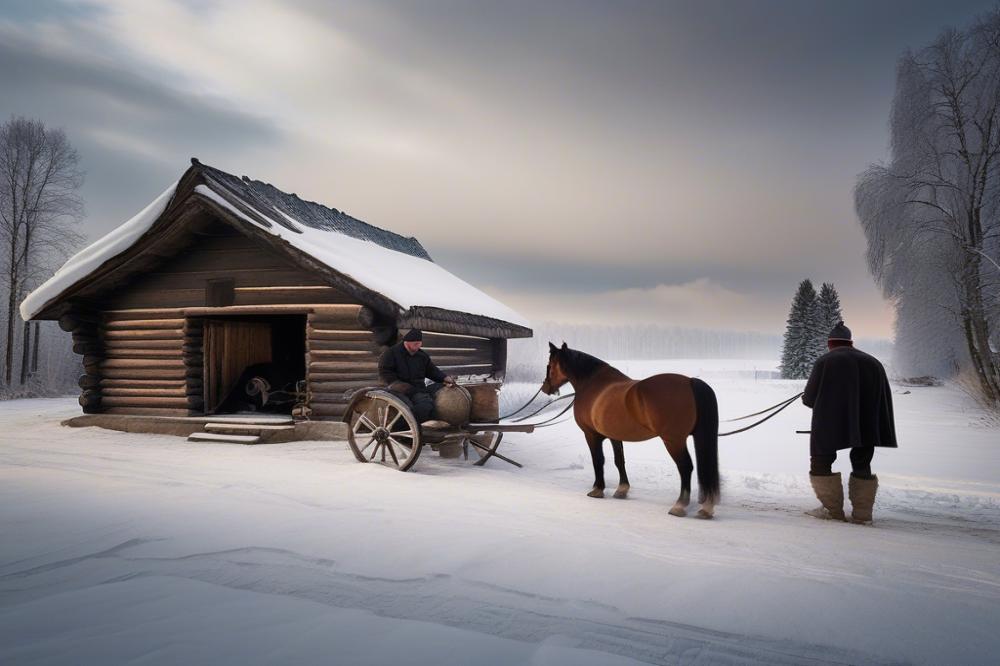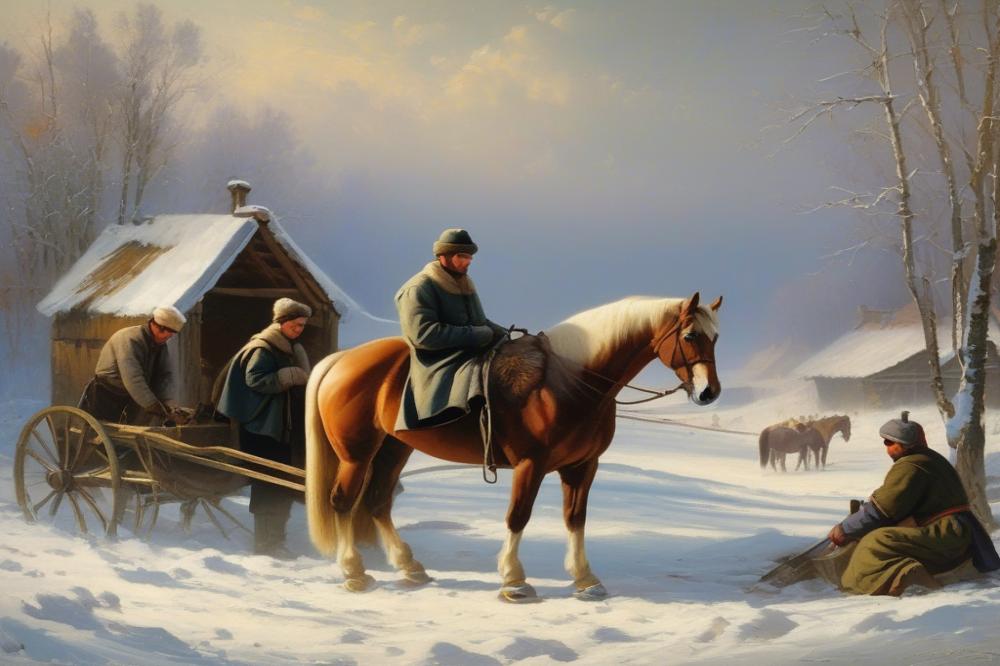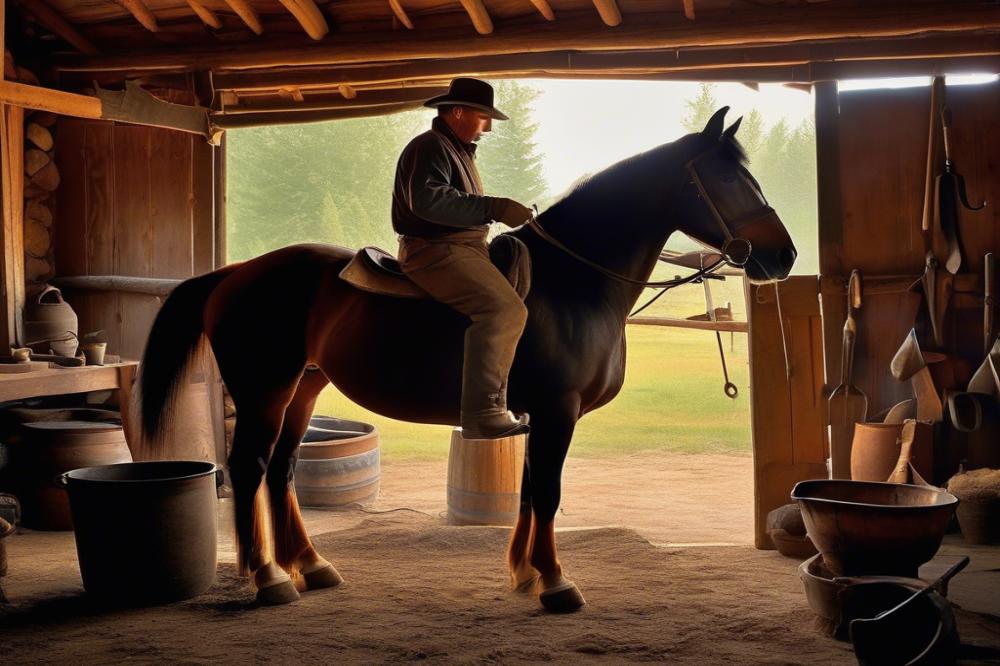Russian farriers and horse shoeing: Time-Honoured Methods in a cold climate
Overview of horse shoeing in Russia
Horse shoeing in Russia has a rich tradition. This practice is critical for the well-being of horses, especially in harsh climates. Farriers employ various techniques that have been passed down through generations. In many rural areas, these specialists are not just blacksmiths; they are lifelines for horse owners. Proper shoeing helps protect a horse’s hooves from snow, ice, and rough terrain. Each season presents unique challenges, and skilled farriers adapt their methods accordingly.
Importance of Farriers in Rural Communities
In many parts of Russia, farriers hold a revered position in the agricultural community. Their expertise is vital, particularly in remote regions where access to veterinarians may be limited. Local farmers depend on these craftsmen to ensure the health of their animals. Regular shoeing appointments allow for close monitoring of horses’ health issues. Community members recognize the significance of caring for these animals; they understand that a horse’s performance directly impacts their livelihoods.
Cultural Significance of Horse Health and Care
The bond between humans and horses runs deep in Russian culture. Folk tales and songs often celebrate the strength and beauty of these animals. Horse health is seen as vital not only for agricultural work but also for community pride. Rituals and traditions surrounding horse care emphasize respect and compassion. Maintaining a horse’s well-being involves more than just basic care; it reflects values that bind communities together. With each shoe that is crafted and fitted, the stories of the past are kept alive, creating a bridge between generations.
History of Russian farriers

The craft of horse shoeing in Russia has deep roots that stretch back many centuries. Long ago, horses were essential for transport and farming. These animals played a critical role in daily life, which caused people to seek methods to care for them. This need led to the development of farrier techniques that fit the unique challenges of the Russian climate.
traditional methods of horse shoeing

In the cold regions, many farriers relied on traditional skills passed down through generations. Hand-forged shoes were commonly made from iron and, at times, steel was used for added strength. Skills were not just about making shoes; they also included understanding the horse’s hoof health. Techniques varied widely, adapting to local conditions and the specific needs of the horses. Each farrier learned to customize the shoeing process according to their environment and the horse’s work.
Influence of Russian culture on craftsmanship
Culture plays a significant role in shaping how farriers approach their work. Folk traditions often celebrate the bond between horses and humans, highlighting the importance of careful care. This respect fosters a commitment to craftsmanship. Many farriers participate in local festivals, showcasing their skills. Storytelling is also an important aspect, with legends of heroic horses and skilled horse trainers passed down through time. Such tales inspire a deep appreciation for the art of horse shoeing.
Evolution of farrier techniques through the years
Over the years, practices have evolved in response to many factors. Advances in materials and technology have introduced new tools into the trade. For example, modern electric grinders offer a faster way to shape hooves. Despite these changes, many traditional techniques have remained intact. Craftsmen continue to use methods that combine old practices with new insights. This balance between heritage and innovation reflects the dynamics of Russian society. The dedication remains strong. Each horse receives attention tailored to its individual needs.
Cold Climate Challenges
Impact of cold weather on hoof maintenance
Maintaining horse hooves in cold weather is a significant challenge. The freezing temperatures can cause hooves to become brittle. Water may freeze in the crevices of hooves, leading to cracks and other damage. Additionally, snow and ice can pack into shoes, altering the horse’s balance. Regular checks and trims are vital during this season to prevent more serious issues. Moisture levels change with the temperature, causing varied hoof growth. This variability requires farriers to adapt their techniques to the specific needs of each horse throughout the winter months.
Special considerations for mounting shoes in low temperatures
Mounting shoes in low temperatures requires careful planning. Cold metal can be difficult to work with, and certain materials become less malleable. A farrier must consider the horse’s comfort during this process. Heat is sometimes applied to the shoes before fitting them. This practice helps to make the shoes more pliable and easier to install. Additionally, farriers need to ensure that they are not rushing to finish the job, as frozen ground adds extra difficulties. Attention to detail is especially critical when the ground is covered with snow or ice.
Adaptations in farrier practices for cold climates
Farriers adjust their methods to accommodate the cold climate. Tools may be heated to assist with cutting and shaping. Different types of shoes might be chosen for traction on slippery surfaces. Some farriers opt for composite materials that offer more flexibility and comfort. The timing of shoeing sessions is often changed, with appointments scheduled during the warmest parts of the day. Keeping horses protected from extreme cold is another priority. Blankets or other gear can help keep temperatures stable in a horse’s hooves and legs. Flexible practices often lead to better hoof health in the harsh conditions of winter.
Techniques and Tools
Traditional blacksmithing practices in farrier work
The art of farriery in Russia combines centuries-old blacksmithing techniques with practical horse care. Craftsmanship is critical in this field. Farriers heat metal shoes until they glow red, allowing them to shape them to fit each horse perfectly. This process demands skill, precision, and a deep understanding of equine anatomy. The forge plays a crucial role, as the intense heat changes the properties of the steel, making it malleable. Workers often create custom shoes to accommodate a horse’s specific needs. This focus on individuality sets their practices apart from others.
Key tools used by Russian farriers
Tools of the trade are essential for effective horse shoeing. Hammers, tongs, and anvils travel with each farrier. These items might seem simple, but each one serves a distinct purpose. For example, hammers help shape the horseshoes accurately, while tongs grip hot metal securely. Additionally, farriers use files to smooth rough edges on shoes. There are nail pullers, which remove old nails from hooves, making way for new shoes. These tools have been honed over generations, remaining integral to the craft.
Comparison of techniques with global practices
Farrier techniques differ around the world, reflecting local traditions and environments. In some regions, automated tools are preferred, speeding up the shoeing process. However, Russian methods are rooted in manual craftsmanship. This emphasis on hands-on skills often leads to higher-quality results. Across borders, shoe designs might vary due to climate needs, with colder climates needing more insulative materials. Each technique has its merits, shaped by the horse’s requirements and the farrier’s expertise. Understanding these differences provides insight into how horse care has evolved.
Importance of Equine Care
Role of Farriers in Overall Horse Health
Farriers play a critical role in maintaining the health of horses. Their expertise in hoof care directly affects the overall well-being of these animals. Hooves support the horse’s entire weight and absorb shock during movement. A well-trimmed hoof promotes good posture and mobility. Neglecting hoof care can lead to serious health issues, not just for the hooves, but for the whole body. Regular visits from a skilled farrier are essential for monitoring the condition of hooves.
Integrating Hoof Care into Broader Equine Care Routines
Hoof care does not exist in isolation; it is part of a comprehensive health plan for horses. Basic routines include feeding, grooming, and regular veterinary check-ups. All these aspects work together to promote the horse’s health. Owners should make hoof inspection a regular task, looking for signs of cracks, uneven wear, or infections. Establishing a relationship with a knowledgeable farrier complements these efforts. Coordination between farriers and vets ensures that any issues are addressed promptly.
Preventative Measures and Common Issues Faced in Cold Climates
Cold climates pose special challenges for horses and their caregivers. Moisture can lead to thrush, a painful hoof condition caused by bacteria. Snow or ice can create problems like slips or injuries. Providing a dry, clean environment is crucial for preventing such issues. Maintaining proper hoof length and shape is important. Regular trimming can help horses adjust to icy conditions and uneven terrain. Awareness of these factors helps owners take necessary actions to protect their horses throughout harsh winters.
Rural Practices and Community
Community’s Reliance on Skilled Farriers
In rural areas, the bond between communities and skilled farriers runs deep. Horses often play critical roles in daily life. Whether for work or leisure, many depend on these animals for transportation and farming. A well-shod horse can improve both performance and safety. Communities hold farriers in high regard. Their expertise becomes essential when livestock need care. Healthy hooves lead to healthier horses, benefiting everyone involved.
Training and Apprenticeship in Rural Areas
Training new farriers is a vital process. In many villages, apprenticeships begin at a young age. Experienced craftsmen take on the roles of mentors. They share their techniques and traditions. Knowledge is passed down through hands-on experience, ensuring proper skills are acquired. Learning often occurs in workshops filled with tools, heat, and the sounds of clanging metal. Patience is crucial, as mastering the trade takes years. This method not only teaches the craft but also forges community connections.
Farriers as Cultural Custodians of Knowledge
Beyond technical skills, farriers serve as carriers of cultural heritage. traditional methods of shoeing horses have been around for generations. Many of these practices reflect local traditions and values. As time marches on, it becomes important to preserve this knowledge. Each skilled farrier keeps alive the lore and techniques learned from their predecessors. Workshops and gatherings allow for ongoing exchanges among farriers. In this way, the history of horsemanship stays vibrant and alive in the community.
Final Thoughts on Farrier Practices in Russia
The role of farriers in Russia is more significant than many realize. These skilled artisans engage in a delicate balance between tradition and the demands of modernity. Their expertise in horse shoeing reflects a deep understanding of local needs and environmental challenges. Craftsmanship passed down through generations has cemented a strong cultural identity among these specialists.
Preserving traditional methods is vital. They form the backbone of equestrian care in a nation where horses have long been partners in labor and sport. As society evolves, the risk of losing these practices grows. Younger generations need motivation to embrace these time-honored techniques. Encouraging their interest ensures a legacy that enriches both the horses and the farrier community.
Looking forward, the outlook for farrier practices in Russia presents both challenges and opportunities. The increasing use of technology could enhance efficiency and improve horse welfare. However, integrating new tools should not come at the cost of valuable skills. Striking a balance will be crucial as these artisans navigate changing times in a cold climate.
Ultimately, the future of farrier work depends on a commitment to heritage and innovation. Developing programs to educate aspiring farriers can help bridge the gap between traditional and modern methods. Sustaining this unique craftsmanship will forge a brighter path for both horses and those who care for them.



